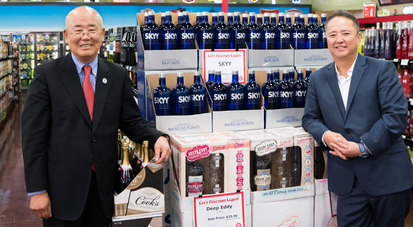 Many of us have been in this position before: You’re browsing through restaurants online, looking for a fun place to dine that night. Nothing fancy needed; just a relaxed spot to enjoy good food and atmosphere. You find what seems to be the perfect place. You check out the menu and it looks good…but where are the prices? How much will this meal cost? The last thing you want is to make the drive only to find out this place is twice as much as it’s supposed to be. You move on, continuing your search for a match you can be sure about. Not all restaurants are created equal, and different online strategies are necessary for each establishment to maximize conversion—in this case, getting a customer who finds you online to actually walk into your restaurant and pay for a meal. And while we discussed enhancing your online presence through SEO in a previous issue, the decision to post menu prices online can make or break the customer’s decision to actually visit your restaurant. So when do you post your menu prices online? There is no golden rule, but generally speaking you should only forego posting prices if you cater to the kind of guests where money is never an issue. This said, I’ve outlined several points to address the issue further. 1. Know your customer This idea has been mentioned several times across previous issues, and will inevitably be mentioned again in the future. Every successful business knows its core customers, and restaurants should be among the strongest performers in this regard. This doesn’t mean you need to sit down with every 2-top to memorize their name and favorite order. Rather, simply observe the types of people who dine with you. How old are they? What is their average spend per visit? What items are being ordered more often, and at what price point? What items are not selling, and are those coming at a different price point? When to post prices online: When your target customer is more price-sensitive. Typically, this customer is younger or in a lower income bracket. They order fewer items and tend to choose from the cheaper options on the menu. This type of customer needs to be sure about what they’re going to spend before they walk in, or else they won’t walk in at all. 2. Know yourself This one may seem obvious, but I have personally glanced over many great-looking restaurants simply because they didn't align their pricing strategy with their identity. Simply put, know whether your restaurant is considered casual or high-end. There’s certainly a lot of gray in between and everyone has their own opinion, but the answer can probably come back to your customers. Their demographics and purchasing decisions should say it all. Brand misalignment leads to much bigger issues than online pricing. Very few roadhouse BBQ spots can pull off high-end appeal. Conversely, few customers will appreciate a cheap and cheap-looking steakhouse. Extreme examples aside, think about the kind of food you serve and your average check. When to post prices online: When your restaurant is on the casual side. If your restaurant has an entire section dedicated to pizza or burgers, you are almost certainly a casual place, no matter how posh your décor. Even if you consider yourself high-end, I would recommend posting prices online if your average check is less than $100/guest. 3. Know your motive Hiding menu prices online will work if you’re emphasizing the food and the experience. Again, this can only work in very high-end or reputable establishments where the customer cannot afford to care about the price. If you’re another new, posh-looking restaurant that serves a hip crowd and stays on top of the trends with a menu full of creatively-named dishes, then you’re likely catering to millennials. Millennials tend to be price-sensitive, and you cannot afford to lose them to a place that tells them exactly how much they're going to spend beforehand. If you think that hiding your prices online will help lure customers in, think again. Many will discover your prices one way or another, and many more will simply give up on you altogether. When to post prices online: If you’re trying to attract more customers into your restaurant. Unless you’re booked solid for days at a time, you likely fall into this category. Extremely important in any case is keeping your menu current, especially the prices. When customers mentally plan on ordering a $20 item and find that it’s $22 when they walk in, that will likely be the last time you see them. Always err on the side of caution when it comes to pricing: if you’re still in doubt of whether or not to post prices, post them.
115 Comments
 ‘Big Data’ is a trendy term, often thrown around with the same allure as ‘market research,’ ‘algorithm’ and other such catchphrases that make people sound smarter than they actually are. So let’s first define big data, talk about a few software options available, then dissect the concept to understand how it can profit restaurant owners, managers and employees. Big data is nothing more than using transaction-level data to form overarching strategies to increase profitability. For restaurants, this means using patterns from point-of-sale data to refine your menu, change staff procedures, adjust pricing and/or alter promotional tactics. For example, a restaurant owner can examine all the POS transactions over the course of a week, sort them by cashier, then divide each total by the number of covers to get each server’s average revenue/cover. This statistic allows the owner to identify his star performers, average performers and underperformers. The owner can then use this statistic as a means for shift/section assignments, promotion and staff-wide goals and contests. Choosing your Data Software Numerous analytics platforms exist to monitor POS data, and most don’t require any kind of numbers-based expertise. A basic Google search will unveil dozens of options, so simply browse and find a service that matches your price point and standards for convenience. If I had to recommend a service, it would be Spotfire. Spotfire sorts POS data by employee, check open/close, gross sales, revenue/cover, item count, turnover time, and many additional categories. Spotfire also allows for easy exporting into Excel, which, if you do have analytical expertise at your disposal, creates even more opportunities. "A surprising number of management teams are unaware of their individual item sales." Another common software is Avero, which specializes in restaurant analytics. You’ve got some pretty big names with Avero—Caesar’s Entertainment, Four Seasons and B&B Hospitality among others. A big-brand software will be more beneficial for learning and troubleshooting, with more advice available within the restaurant community.
Managing Financial Performance Once an owner has chosen a software, incorporated it into your POS and familiarized yourself with it [this is a long process, but worth it!], it’s time to explore ways to optimize profit. Here’s a few tips to boost the bottom line:
Share the Data While an owner or manager may be the one managing the data, it’s the whole restaurant’s responsibility to understand the data. Use your data to form restaurant-wide goals, such as increasing average revenue/cover, and update staff on their progress every two weeks. This allows the entire group to not only buy into data usage, but embrace it as a way to improve their performance and their paycheck. Use the data to your advantage by quantifying benefits from larger tips for your staff. For example, say you set a revenue/cover goal of $25 and you have a server at $24.68. Increasing $0.32/cover * 100 covers/day * 22 days/month * 15% average tip is an extra $105 in the server’s pocket each month. That’s your iphone payment over the course of a year! Once servers see what’s in it for them, data usage becomes an immediate best friend. The possibilities for incorporating data into restaurant management are virtually endless. The backbone of any of these tactics, however, is reliable data. Managers should put procedures in place to ensure servers enter information into POS systems correctly. Administering random audits and using assistants to monitor POS entry should be used with caution. Instead, communicate the reason why you need accurate data to your service staff, placing particular focus on how accurate data will benefit them. This communication will improve workplace culture and allow owners and managers to better execute on their data-driven visions.  Lee’s Discount Liquor celebrates its 35th year here in Las Vegas. To some, it probably seems like just yesterday that Founder Mr. Lee opened his first shop near Spring Mountain and Jones. Lee’s has truly grown up with Las Vegas, sharing the best of times and the worst of times, and learning every step of the way. What began as a small family owned business has evolved into a retail superpower, practically a household name across the Las Vegas Valley. It’s nearly impossible to drive through this city without passing one of their eye-catching billboards, or one of their 19 locations. But Lee’s is still family-owned and run, and it’s this endearing aspect that’s allowed Lee’s to retain its mom-and-pop feel even as it continues to expand. “The community really embraces us. They know we’re the local company and we’ve grown up with them. Lee’s as a brand resonates with Las Vegas,” said President Kenny Lee. Kenny still refers to his father, as Mr. Lee. Lee’s doesn’t do business on the family name alone, however. Lee’s is the largest liquor retailer in Las Vegas, and a critical aspect of its business is variety…often more variety than its customers could imagine. “We have more than 18,000 SKU’s,” Kenny began. “To compare, Costco would carry 500 SKU’s in its beer, wine and liquor section. [Costco] carries around four vodkas. We carry more than 1,000. We try to carry everything. That’s what distinguishes us from the rest.” Lee’s carries more than 9,000 wines as well, sourcing from six continents [Antarctica doesn’t produce wine]. Add in 2,000 beer SKU’s to round out an inventory that people will have trouble finding elsewhere. Kenny called out Southern Glazer’s Wine and Spirits as a big help in growing their selection. “They are certainly our biggest distributor,” Kenny said. “[Southern] carries all the brands that the restaurants serve, as opposed to just the supermarket brands. Larry Ruvo really cares for us, values us as a local partner.” When asked to reflect on 35 years of solid success, Kenny immediately defers to his father’s hard work and perseverance. “It’s quite an achievement that my father has earned. It’s hard for a business to survive for 35 months, let alone 35 years,” said Kenny. “We’ve seen hotels come and go in that time. To have a business that has become a staple to this city, that shows the work ethic of Mr. Lee…I am so proud of him.” The journey was far from easy. Lee’s was practically born out of necessity—the product of an immigrant entrepreneur finding a way to maneuver around the language barrier. Mr. Lee immigrated to the US from Seoul, South Korea in 1980. He came from a steady job with the Central Government of Korea, but moved his family overseas because he wanted a better education for his children [Kenny and his sisters, Annie and Tina]. His intentions were to settle in New York to open a dry cleaning business, but he made an initial stop in Las Vegas because he had family who lived here. Mr. Lee did complete that trip to New York, but was back in Las Vegas a month later. The laundry business simply wasn’t for him. Knowing virtually no English, he found it very difficult to interact with customers. He made ends meet by doing odd jobs, hindered all the while with face-to-face interaction being such a big obstacle. Then, came the ‘aha!’ moment, in a most unexpected setting. Still in his first year in Las Vegas, Mr. Lee walked into a liquor store to buy a bottle of Johnny Walker Black. “The cashier just told him how much it was and he paid for it,” said Kenny. “[Mr. Lee] couldn’t believe how easy it was to do business like that.” With that bottle of scotch, a business came to be. “He opened his first store on the west side, around Spring Mountain and Jones. He called it A Plaza Liquor,” Kenny said. “He wanted it to be the first one in the phone book.” The first store got off to a decent start, but Mr. Lee was completely new to running a retail storefront and sought to beat the learning curve. He utilized his small network to find the right kind of business model. “A friend told him about a store in Denver, so [Mr. Lee] flew down to see how the place operated,” Kenny said. “The owner of that store told him that the money was in the discount volume business. He told him to sell cigarettes at cost and have the lowest prices in your neighborhood for liquor, wine and beer.” Business took off from there. The first store did so well that Mr. Lee opened a second location, on Flamingo and Pecos. More stores opened from there, and then it came time for Mr. Lee to bring Kenny into the family business. “I grew up always helping out with the business. Low overhead was [Mr. Lee’s] key thing. Every break, every holiday I would come to help,” Kenny said. “We had a printing store right next door. The owner there would hand-draw advertising flyers for us and would make hundreds of copies. Me, my two sisters and father would get up at 4 a.m. and hang flyers from door to door.” “Initially I was in college to be an optometrist, but when I was a sophomore my father called to ask me to join the family business,” Kenny said. “I took a few days to think about it, then switched my major to business management. I started from the bottom, from stocking to cashier, then ran a store and became a VP in 1998, then eventually president.” The momentum continues to go strong, with Lee’s set to do more than $100 million in gross sales in 2016. They are strategic in selecting new locations as well—not expanding for the sake of expanding, but growing stores to grow the bottom line. “My father maps out the whole city,” Kenny said. “He works very closely with a realtor. When looking for a new store [location] he sees how many homes are built around the area, the average income and other demographics.” And once they do decide on a location, it’s built to last. “We buy the land and build our own buildings. We own all of our own real estate except two locations.” Lee’s has since expanded beyond Las Vegas’s borders, with a store in Mesquite and more external locations upcoming. “Our next store will be West Wendover, 5 hours north from here. It’s 80 minutes from Salt Lake City. The West Wendover store will hopefully open in 2017.” Lee’s proximity to Salt Lake City gives them access to an enormous market. Utah’s liquor laws are significantly different from those in Nevada, and Lee’s is positioning itself to take full advantage. Their Mesquite store is currently their best-performing location in terms of volume: proof of concept for tracking areas of high demand and low supply. But it’s far from smooth sailing for the business as a whole. Increased competition threatens to take away from Lee’s market share, but Lee’s is still confident that business will remain strong in Las Vegas. “Total Wine has three locations. Costco and Smith’s are expanding in the liquor business…more supermarkets and big box stores, but as long as the economy stays healthy, there’s plenty of business for everybody,” Kenny said. “We’re also competing with the hotels for employees, and we can’t pay like the hotels do. Finding good people is a challenge, but when we find good people we try to keep them.” And while Lee’s family-owned feel and extravagant selection are key differentiators, their advertising truly stands out. Their billboards stand out so much, in fact, that Lee’s has been met with some controversy from parties who feel that their jokes on drinking cross the line. “There’s always going to be people who don’t like our ads,” Kenny said. “When KLUC did an online poll about us, 85% of the people said that they knew we were just joking around. When you are in a city where you have mobile billboards with half-naked girls, it’s hard to believe that people would give us trouble for the stuff that we put on our signs.” On the other end of the spectrum, Lee’s has a nonprofit [Lee’s Helping Hand] that has contributed more than $800,000 to local charities. Proceeds come from several tasting events that Lee’s puts on every year. Kenny is also happy to say his family has expanded its business ventures into the restaurant world. “My dad has always had the dream of owning a Korean restaurant. That place [Lee’s Korean BBQ] is packed. We went there the other night and couldn’t even get a table…at our own restaurant!” Kenny said. “He loves talking to people. You can tell how much the community loves him.” The Lee family has paved the way for remarkable transformation over the last 35 years, and Las Vegas is holding up a glass to 35 more. |
AuthorBenjamin Brown is a seasoned restaurant writer and hospitality consultant, serving up SoCal's hottest food news and reviews. Categories
All
Archives
June 2021
@Foodie_Biz |
|
Home
About
Blog
Consulting Tips
Contact
Legal
|
Foodie Biz provides restaurant news and reviews for the food community, as well as consulting advice for restaurant owners and other hospitality professionals.
Contact Foodie Biz for media opportunities and freelance consulting projects. Contact Foodie Biz |



